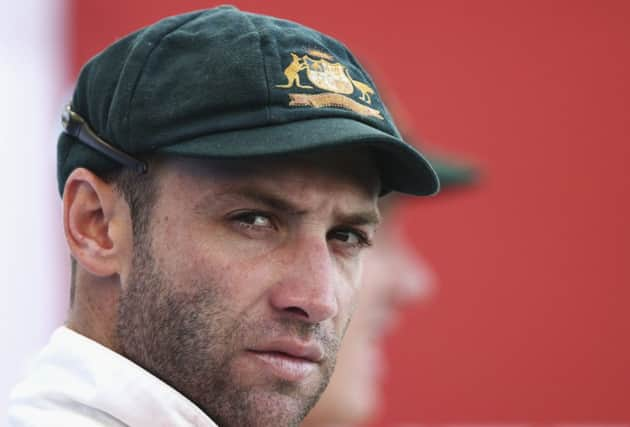Cricket: Head ‘can’t be fully protected’


Australia batsman Hughes is in intensive care in a Sydney hospital after being hit by the ball while playing in a Sheffield Shield game.
The South Australia opener, according to Cricket Australia, was “struck on the back, lower left side of the head when he turned away as he followed through with an attempted pull-shot to a regulation short-pitched delivery from young NSW quick Sean Abbott”.
Advertisement
Hide AdAdvertisement
Hide AdModern-day cricketers wear helmets and an array of protective equipment but the risks are real when players face up to balls that are roughly the same size as a baseball but harder and heavier, often travelling at speeds of over 140kph (87mph).
The extent of Hughes’s injury may not be known for days, but there is a long list of cricketers who have suffered horrific injuries that have been career ending and sometimes fatal. In the infamous Bodyline series in 1932-33, the Australian wicketkeeper Bert Oldfield had his skull fractured when he was hit by a ball from English fast bowler Harold Larwood.
CONNECT WITH THE SCOTSMAN
• Subscribe to our daily newsletter (requires registration) and get the latest news, sport and business headlines delivered to your inbox every morning
In the 1960s, Indian captain Nari Contractor was hit in the head by a ball from West Indian paceman Charlie Griffith. Contractor was unconscious for six days. He needed a blood transfusion to survive and never played international cricket again.
Bob Willis fractured Rick McCosker’s jaw in the 1977 Centenary test and, in 1986, Mike Gatting’s nose was smashed by Malcolm Marshall. In 1975, New Zealander Ewen Chatfield swallowed his tongue and stopped breathing after being hit on the temple by English fast bowler Peter Lever during a Test match. His life was saved by English physio Bernard Thomas, who sprinted on to the field and administered CPR.
Staying true to the cricketers’ gentlemanly code, Chatfield later said of Lever: “It wasn’t really his fault. I should have been able to get out of the way. He’s a very nice fellow.”
Two years ago, South African wicketkeeper Mark Boucher lost the lens, iris and pupil in his left eye after being hit by a bail that flew back off the top of the wicket. “Having looked at it on YouTube, I don’t like to look at it too much because it freaks me out a bit,” he said.
Other players, however, have not been so lucky. India’s Raman Lamba, 38, died in 1998 after being struck in the temple by a ball hit by a Bangladesh batsman. Pakistan’s Abdul Aziz was struck on the chest, collapsed and died on the way to hospital, aged 17.
Advertisement
Hide AdAdvertisement
Hide AdCricket authorities have sought to minimise injuries by making protective equipment mandatory for some age groups and batsmen now take to the crease wearing leg guards, elbow pads, gloves and helmets. Hughes was wearing a helmet.
New equipment is available which does offer batsmen extra protection, according to helmet manufacturer Masuri. It said in a statement that Hughes was wearing its “Original Test model” when the incident occurred, but that has now been superseded by the “Vision Series” which has a new helmet and grille profile.
There can be no confirmation as to whether the incident could have been avoided but Masuri says it is constantly looking to make improvements. The statement said: “The thoughts of everyone at Masuri are with Phil Hughes and his family. It appears that Phil Hughes was struck by the ball to the rear of the grille and below the back of the shell.
“This is a vulnerable area of the head and neck that helmets cannot fully protect, while enabling batsmen to have full and proper movement.
Managing director Sam Miller added: “Helmet manufacturers are constantly developing their products to make them safer. We work continuously with the governing authorities to reduce the risk of injury to players.”
SCOTSMAN TABLET AND IPHONE APPS